Software projects owe their success and failure to the software development process. A competent software team can fail to deliver quality software if they are not faithful to the development process.
One intelligent free-spirited developer can put the project into the abyss of darkness by deviating from the defined course of action.
“Programming today is a race between software engineers striving to build bigger and better idiot-proof programs, and the Universe trying to produce bigger and better idiots. So far, the Universe is winning.”―Rick Cook, The Wizardry Compiled
Software Development Life Cycle or SDLC is a systematic framework for developing high-quality software programs. It defines a structured project management model that converts ideas into a finished computer program. It outlines a sequence of steps that defines an actionable plan to take the programming process forward.
SDLC is sometimes interchangeably referred to as the Program Development Life Cycle or Product Development Life Cycle (PDLC). With minor differences, SDLC or PDLC aims to deliver cheap, efficient, and effective computer programs to solve real-world problems.
The 8 stages of SDLC are Planning, Requirement gathering, Analysis and Design, Development, Documentation, Testing, Deployment, and Maintenance.
SDLC is a never-ending program development life cycle to create programs incrementally, iteratively, or sequentially. It has various development models that promise a streamlined programming process.
Let’s discuss the different stages of the Software Development Life Cycle.
Project Planning
“If you fail to plan, you are planning to fail”—Benjamin Franklin
The first step in building a successful computer program is to plan everything. It is the first step in turning your idea into a reality. Project planning and requirement gathering phases are sometimes executed in parallel.

The team manager or a senior resource prepares the initial plan of action for a new software program. The project scope is identified and defined. Potential issues and limitations are highlighted. If the plan is robust, it will have contingencies available to avert all risks.
Based on the initial requirements gathered and project feasibility studies, the manager estimates the project cost and schedules resources accordingly. Relevant stakeholders and sponsors are engaged. Project objectives are prioritized and deliverables are identified.
Requirement Gathering
“Walking on water and developing software from a specification are easy if both are frozen.”― Edward V. Berard
Requirements can be technical, functional, or system-based. The second phase in SDLC lists all requirements after consulting all the stakeholders. The stakeholders include sponsors, clients, end-users, developers, executives, IT support, etc.
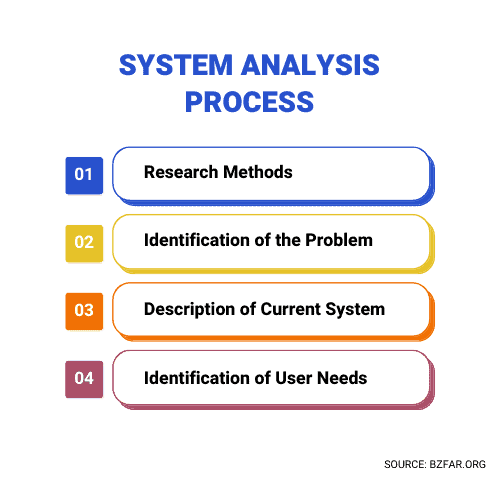
Requirement gathering is all about users which is why various studies are conducted to record the users’ responses. Interviews are conducted with the stakeholders to extract every bit of relevant information.
Business analysts are usually tasked with gathering requirements. They analyze all company documents and records to find relevant pieces of information. They evaluate the client’s existing ecosystem to check for possibilities of system integrations.
Sometimes, existing products that are similar to the gathered requirements are reverse engineered to uncover their complexities.
Analysis & Design
“The big optimizations come from refining the high-level design, not the individual routines.”― Steve McConnell, Code Complete
Many SDLC experts categorize Analysis and Design separately but for the sake of simplicity, we have grouped them together. In the analysis and design phase, rapid prototyping is performed to develop user interfaces. Program architecture is designed along with building several use-case and sequential diagrams.
High-level and low-level design documents are prepared. Database schemas are developed and refined in this phase. The security architecture for the entire application is also finalized. The design process records hardware, software, and network capabilities.
The development team identifies design patterns, external libraries, APIs, and other dependencies during this phase. They choose relevant front-end and back-end programming languages and frameworks from a wide range of high-level languages.
Program Development
This is where all the fun begins.
In the development phase, a team of developers implements requirements by writing actual program code using a programming language that was selected in the previous phase.
The development team must try to write all programs using the same language. Using many programming languages can cause confusion and the program modules would become difficult to integrate. All syntax errors are handled here.
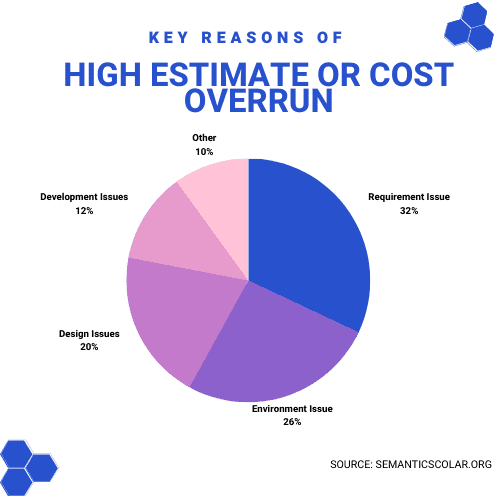
In this phase, source code management is vital. The programs written in this phase must be accessible to each member of the team. This can be performed using a version control system like Github.
The developers may also identify requirements that don’t present any practical feasibility. Hence, requirements must be altered and communicated clearly to the client in order to proceed. Any change in the requirements can result in altered delivery timelines.
Documentation
“It’s not a bug; it’s an undocumented feature.”
Documentation refers to the process of writing user guides, API documentation, and code comments. Documentation is usually carried out in the development phase but lazy programmers leave it till the end. Unnecessary documentation must be avoided.
Documentation helps in future modifications, maintenance, and code redesigning. Documentation must be easy to understand for the developers who have not worked on the project. Using documentation, we can validate the implementation of all requirements.
Testing
“We are writing our own karma! I mean my test cases”― Ahkeno
Testing evaluates the implemented code requirements. In test-driven development, unit test cases are written for each coding functionality. Testing helps the development team in maintaining code quality. Extensive code debugging is performed in this phase.
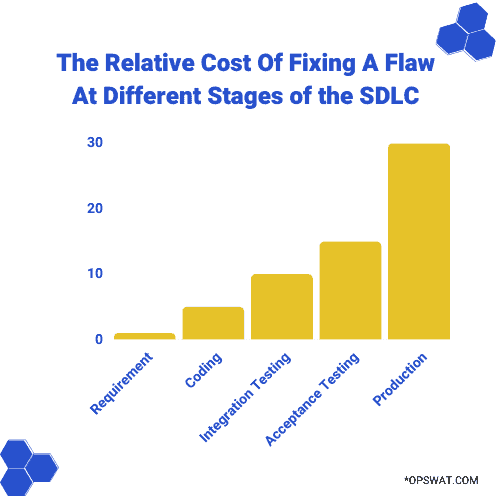
Test cases can identify critical problems so they can be fixed in a timely manner. While syntax errors are handled during development, logical errors are identified during testing.
The quality assurance team prepares test data and executes various types of testing processes to validate the robustness of the computer program. They perform integration testing, performance testing, alpha-beta testing, security testing, and more.
Deployment
“Delivering good software today is often better than perfect software tomorrow, so finish things and ship.”― David Thomas, The Pragmatic Programmer: From Journeyman to Master
After successful development and testing, the program is ready to be deployed into production. Production servers are either maintained stand-alone or in the cloud. Servers are usually maintained by the IT support staff and tight coordination is needed among the development and IT teams.

The development team must maintain Continuous Integration and Continuous Delivery (CI/CD) pipelines to ensure a smooth transition from the development phase to the deployment phase.
In the early stages of application development, the goal of the deployment phase is to build a Minimum Viable Product (MVP). An MVP has all the fundamental functionalities that are needed from the system. Once the stakeholders approve the MVP, more functionalities are added through the development phase.
Maintenance
“If, at first, you do not succeed, call it version 1.0.”― Khayri R.R. Woulfe
The final step in the program development life cycle is to maintain the deployed software program. During this phase, frequent quality control checks are performed like checking for newer versions of libraries or removing obsolete dependencies.
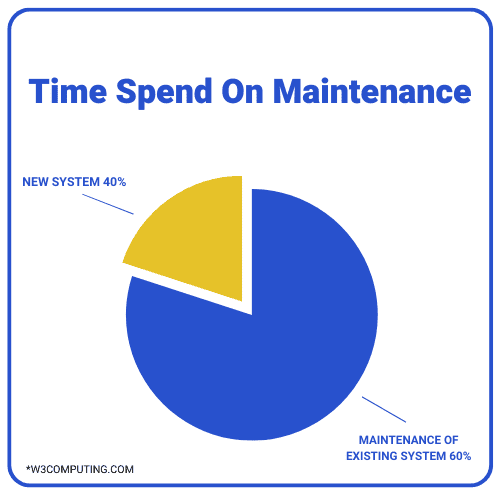
In the maintenance phase, the IT support frequently backs up the whole system including code and database to prevent any loss.
Developers analyze crash reports generated by the system or sent by the end-users. Software updates and patches are applied. If the client requests new features or updates in existing requirements, the program development life cycle is repeated to accommodate these changes.
Benefits of Software Development Life Cycle
Effective use of PDLC or SDLC models can increase the quality of the developed software application. Let’s discuss the benefits of writing code by following a defined development lifecycle.
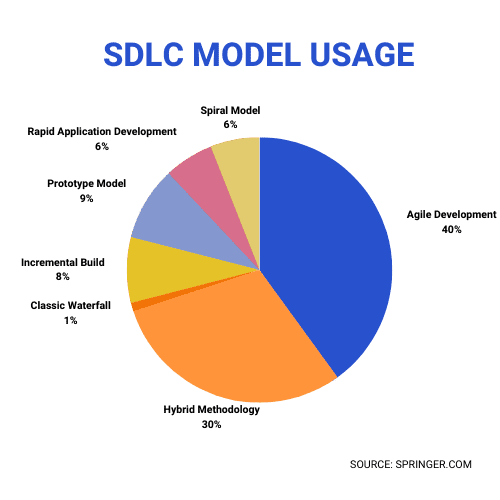
- The development team has greater control over the program development process.
- The development plan is transparent for the entire team with defined scope and goals.
- The development team has clearly defined roles and responsibilities, making resource allocation easier.
- Potential problems can be identified early on, making them easier to manage.
- Cooperation among stakeholders like developers, managers, executives, clients, and end-users improves greatly.
- Budget management is easier with more transparency in functional requirements, technical requirements, and resource allocation.
- Customer feedback can be incorporated at any stage quickly, exceeding customer demands.
- SDLC models like Agile can deliver software faster.
- When done correctly, SDLC reduces the cost of program development.
Now that we have discussed the 8 stages of SDLC and its benefits in detail, let’s explore the different models that can be used for applying SDLC practically.
Exploring Different Types of Program Development Life Cycle Models
Lorem ipsum dolor sit amet, consectetur adipiscing elit. Ut elit tellus, luctus nec ullamcorper mattis, pulvinar dapibus leo.
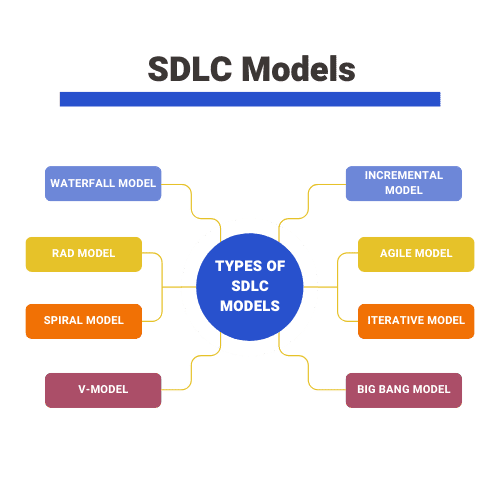
Lorem ipsum dolor sit amet, consectetur adipiscing elit. Ut elit tellus, luctus nec ullamcorper mattis, pulvinar dapibus leo.
Waterfall Model
The waterfall model is one of the oldest software development processes that follows a linear sequential lifecycle. Each stage in PDLC is implemented completely before moving on to the next stage without any overlapping among the stages.
One iteration of the waterfall model starts with planning and ends with maintenance. If any changes are needed, the next iteration starts the whole process again. The waterfall model was very beneficial during the early days of programming.
The waterfall model is useful for small programs or when the requirements are stationary―highly unlikely. If the project is complicated, even a small change or error can cause trouble for the development team. The client’s feedback cannot be included during the development stage.
V-Shaped Model
Also known as the Verification and Validation model, the V-shaped model validates each phase of the SDLC sequentially in a V-shape. The requirement stage is tested for acceptance. System testing is performed on the design stage and unit testing is performed on the code development stage.
Just like the Waterfall model, the V-shaped model starts the next stage after the previous stage is completed. It is a rigid model and only suitable for projects that don’t have frequent requirement changes.
Iterative Model
“When to use iterative development? You should use iterative development only on projects that you want to succeed.” – Martin Fowler
The iterative model develops software programs incrementally. Requirements are implemented in the form of builds. Each build develops a small portion of the requirements.
In iterative modeling, complete requirements are not needed at the beginning. As each build gets completed, more functionalities are added to the entire system incrementally. Builds can be implemented in parallel as well.
The incremental approach allows design modifications and functional changes at each step, facilitating customer feedback and evaluation. Though frequent requirement changes are not favorable. The iterative model needs more managerial oversight and involves effective risk analysis.
Spiral Model
The spiral model is similar to the Iterative model with more emphasis on risk analysis. The SDLC has a spiral shape with many loops. Each loop represents a stage in the development lifecycle. As the number of loops increases, the cost of the project goes up.
It enables software prototyping at each stage. Additional requirements are added and implemented on each loop. The entire program is gradually released and refined.
The spiral model is good for large-scale projects and can accommodate requirements flexibly. Customer feedback can be incorporated early on in the developmental stages. However, it is a complex and expensive model as it relies profoundly on effective risk management.
Agile Model
The agile model promises rapid delivery with more focus on adaptability and greater customer satisfaction. It is an iterative and incremental SDLC model. The entire program is developed in iterations.
In 2001, agile enthusiasts formulated an agile manifesto that has four software development principles:
- “Individuals and interactions over processes and tools”
- “Working software over comprehensive documentation”
- “Customer collaboration over contract negotiation”
- “Responding to change over following a plan”
Agile development is the most commonly used SDLC model worldwide due to its adaptive and realistic approach. Some of the known Agile methodologies are Extreme Programming (XP), Scrum, and Kanban.
Big Bang Model
In Big Bang modeling, the entire program runs on uncertainty and high risk. Program development is focused on development and coding with little emphasis on project planning. Developers write programs based on their understanding of the requirements.
There is no definite flow chart for problem analysis. Requirements are added and implemented on the fly. The computer program only needs to be working properly.
This model is suitable for small-scale academic and industry projects with a small development team. It is easy to manage but development costs can go up if requirements are misunderstood in the beginning.
Concluding Thoughts
“Make it work, make it right, make it fast.” – Kent Beck
In this article, we have discussed the program development life cycle or software development life cycle in detail. We have highlighted various program development life cycle models and their benefits for building high-quality computer programs.
The development teams must choose the relevant SDLC model and implement it wholeheartedly. Any minor oversight could prove to be disastrous.
It is worth noting that besides showcasing the technical capabilities, the development team must be equally good at soft skills. Without tight collaboration, no team can deliver quality software.




